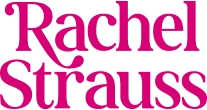Pharmacy benefits management in 2025 is undergoing a transformation toward cost transparency, better formulary control, and value-based contracting. Employers are pushing back on traditional PBM models, demanding accountability, clearer pricing, and data-driven solutions to reduce waste and optimize outcomes.
The PBM Model Is Being Rewritten; Are You Ready?
If you’re an employer or HR leader, you’ve likely noticed that prescription drug costs are rising faster than inflation and PBMs (Pharmacy Benefit Managers) are increasingly being called out as part of the problem and the solution.
So where are things heading in 2025?
In short: the opaque, rebate-heavy PBM model is giving way to transparency, tech-enabled pricing, and outcomes-based strategies. Employers are no longer settling for spread pricing or vague savings guarantees.
In this article, we’ll break down the key PBM trends shaping 2025, what’s driving the changes, and how your organization can take a smarter, more proactive approach to pharmacy benefits.
What Is Pharmacy Benefits Management?
PBMs act as intermediaries between insurers, drug manufacturers, and pharmacies. Their core responsibilities include:
- Creating and managing drug formularies
- Negotiating rebates with drug manufacturers
- Processing pharmacy claims
- Controlling access and costs for prescriptions
But the traditional PBM model has long been criticized for lack of transparency, especially around how much money is saved and how much is kept.
Read more: Balancing Career and Personal Growth
Why Are PBMs Under Pressure in 2025?
1. Escalating Drug Prices
According to AHIP, U.S. drug spending surpassed $600 billion in 2024 and specialty drugs account for more than 50% of that. Employers want to know: Where is our money going?
2. Spread Pricing Controversies
Some PBMs charge payers more than they reimburse pharmacies, then pocket the difference. Several states have banned this practice, and employers are demanding more clarity.
3. Rebate System Reform
Rebates between drugmakers and PBMs have traditionally lacked transparency. In 2025, value-based rebate structures are gaining traction to align cost with actual therapeutic outcomes.
4. Employee Expectations
Employees are more aware than ever. High out-of-pocket costs, drug denials, and delays erode trust in employer-sponsored health plans.

Key PBM Trends Employers Should Watch in 2025
1. Transparent PBM Pricing Models
Forward-thinking employers are opting for pass-through or transparent PBMs, where all rebates, discounts, and fees are disclosed and passed back to the plan sponsor.
2. Increased Adoption of Carve-Out Strategies
Instead of bundling pharmacy with medical benefits, many companies are carving out pharmacy to gain greater oversight and control over drug spend.
Benefits:
- Custom formularies
More flexible cost containment tools - Enhanced clinical oversight
Read more: Top Skills Every Pharmacy Benefit Manager (PBM) Should Master
3. Real-Time Data & Predictive Analytics
AI and analytics tools are enabling employers to track:
- Per-member per-month (PMPM) drug costs
- Utilization spikes
- High-cost claimant forecasting
PBMs that don’t offer transparent reporting are falling behind.
4. Value-Based Pharmacy Contracting
In 2025, more employers are tying drug reimbursement to outcomes particularly for high-cost biologics and specialty drugs.
If a medication doesn’t work as promised, the PBM (or manufacturer) shares the financial risk.
5. Smaller, More Agile PBMs Gaining Ground
As dissatisfaction with “big three” PBMs grows, employers are turning to independent PBMs with customizable models and no conflicts of interest.
Actionable Tips: How Employers Can Navigate the PBM Shift
Conduct a PBM Audit
Review your current contract:
- Are rebates being passed through?
- Is there spread pricing?
- What level of reporting do you get?
Ask for a Clear Pricing Breakdown
Insist on line-item visibility into fees, rebates, and admin costs.
Prioritize Formularies with Clinical Oversight
Partner with a PBM that builds formularies based on clinical effectiveness, not just rebates.
Explore Alternative Funding Models
Consider reference-based pricing, direct-to-manufacturer contracting, or co-pay maximizer programs for specialty meds.
FAQs: Pharmacy Benefits Management in 2025
What does a PBM do for employers?
A PBM manages prescription benefits, negotiates drug prices, and handles pharmacy claims on behalf of employers or insurers.
Why are PBM costs under scrutiny in 2025?
Because traditional PBMs often profit from hidden fees, spread pricing, and rebate retention, leaving employers with unpredictable costs.
How can I tell if my PBM is transparent?
Look for full disclosure of fees, flat pricing models, and regular reporting. Avoid PBMs that bundle pharmacy with medical and don’t share rebate details.
Are independent PBMs a better option?
They can be. Many offer more customizable solutions, transparent pricing, and fewer conflicts of interest.
Is value-based contracting really working?
Yes, especially for high-cost drugs. It aligns financial incentives with real patient outcomes and mitigates risk for employers.
Final Thoughts: Smarter PBM Strategy = Healthier Bottom Line
Smarter PBM Strategy = Healthier Bottom Line
The PBM landscape is shifting quickly and employers who stay ahead of the curve will reap the benefits. In 2025, it’s not enough to provide pharmacy coverage, you need to ensure it’s cost-efficient, data-driven, and aligned with employee well-being.
By rethinking your PBM relationship, demanding transparency, and embracing innovation, you can control costs without sacrificing care.
Want expert guidance on how to audit your current PBM setup or explore more transparent models?
Contact Me for a Consultation to get started.
